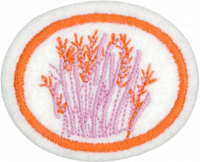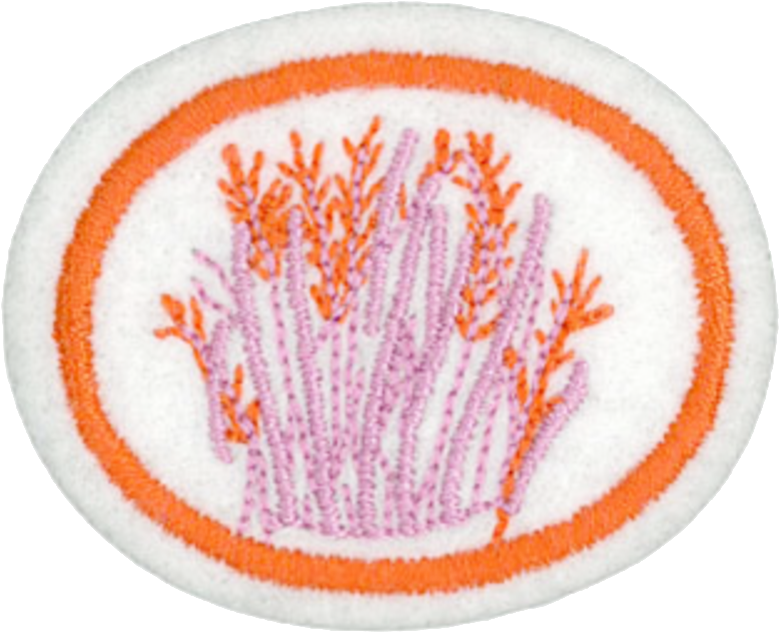Difference between revisions of "AY Honors/Herbs/Answer Key/es"
(Created page with "</noinclude>") |
(Created page with "{{clear}}") |
||
| Line 60: | Line 60: | ||
<noinclude></noinclude> | <noinclude></noinclude> | ||
| − | + | {{clear}} | |
| − | {{ | ||
| − | |||
<div lang="en" dir="ltr" class="mw-content-ltr"> | <div lang="en" dir="ltr" class="mw-content-ltr"> | ||
Revision as of 13:04, 14 April 2021
1
2
3
4
4a
4b
4c
4d
4e
5
Potpourri is a mixture of dried, naturally fragrant plant material, used to provide a gentle natural scent in houses. It is usually placed in a decorative wooden bowl, or tied in small bags made from sheer fabric.
Naturally scented plants used in traditional potpourri include:
- Cedar wood shavings
- Cypress wood shavings
- Incense-cedar wood shavings
- Juniper wood shavings
- Lavender leaves and flowers
- Mignonette leaves and flowers
- Pinyon pine cones
- Rose flowers, Rose hips, or Rose oil
- Cinnamon bark
- Marjoram
Much modern potpourri consists of any decoratively shaped dried plant material (not necessarily from scented plants) with strong synthetic perfumes (and also often strongly coloured dyes) added, with the scent often bearing no relation to the plant material used. Sometimes, items which do not originate from plants are mixed in with the potpourri, to give it bulk and to make it more aesthetically pleasing. It is possible to spray scents onto potpourri, however a fixative is needed so that the scent is absorbed. Generally, orris root is used for this purpose.
The word potpourri comes from the French word "pot-pourri," which was the French name for a Spanish stew with a wide variety of ingredients called olla podrida. In English, "potpourri" is often used to refer to any collection of miscellaneous or diverse items.
In ceramics manufacture, a potpourri vase is a vase specifically designed for holding potpourri. In the traditional designs a potpourri container is provided with a pierced fitted lid, through which the scent may slowly diffuse.
6
A pomander, from French pomme dambre, i.e. apple of amber, is a ball made of perfumes, such as ambergris (whence the name), musk, or civet. The pomander was worn or carried in a vase, also known by the same name, as a protection against infection in times of pestilence or merely as a useful article to modify bad smells. The globular cases which contained the pomanders were hung from a neck-chain or attached to the girdle, and were usually perforated and made of gold or silver. Sometimes they contained several partitions, in each of which was placed a different perfume. There is an early Spanish pomander set with emeralds, and a fine 16th century one, dredged from the Thames, in the British Museum.
Today some make pomanders out of oranges studded with whole cloves, following an early American custom.
7
A good Field Guide to edible wild plants or wildflowers will be very useful in meeting this requirement. We recommend one of the following (or an equivalent Field Guide that covers your area):
- A Field Guide to Edible Wild Plants: Eastern and central North America (Peterson Field Guides) by Lee Allen Peterson and Roger Tory Peterson. Note that this book is also very useful for earning the Edible Wild Plants honor, as well as the Pioneering and Wilderness Living honors.
8
- Poke - pink
- Dandelion - red
- Sunflower - orange
- Goldenrod - a golden yellow
- Rosemary - green
- Woad - indigo blue
- Geranium - purple
- Fennel - brown
- Yarrow - gray, black
9
Natural Bug Control.
- Basil - Flies, Mosquitoes
- Catnip - Flea Beetle, Ants
- Dead Nettle - Potato Bug
- Garlic - Mosquitoes
- Henbit - General Insect Repellant
- Hyssop - Cabbage Moth
- Lavender - Moths
- Mint - White Cabbage Moths, Aphids, Flea Beetle
- Pennyroyal - Flies, Mosquitoes, Fleas
- Rosemary - Cabbage Moth, Bean Beetle, Carrot Fly
- Sage - Cabbage Moth, Carrot Fly, Flea Beetle, Slugs
- Thyme - Cabbage Worm
10
Start with this Wikipedia on herbs: http://en.wikipedia.org/wiki/Herb_garden
The links there may be useful to growing your herbs.
- How to Grow Herbs Information about planting, propagating and growing herbs
Herbs can be grown indoors in the winter months by using hydroponic techniques. Growing them hydroponically meets a requirement in the Voyager AY curriculum.
See this link for details.
11
Herbs that attracts bees and butterflies:
- Basil
- Borage
- Catnip
- Cornflower
- Dill
- Echinacea
- Evening Primrose
- Fennel
- Goldenrod
- Horehound
- Hyssop
- Lavender
- Parsley
- Poppy
- Thyme
- Sage
12
- (All scripture text New International Version)
- Exodus 16:31
- The people of Israel called the bread manna. It was white like coriander seed and tasted like wafers made with honey.
- Numbers 11:5
- We remember the fish we ate in Egypt at no cost—also the cucumbers, melons, leeks, onions and garlic.
- Numbers 24:6
- Like valleys they spread out, like gardens beside a river, like aloes planted by the LORD, like cedars beside the waters.
- Psalm 51:7
- Cleanse me with hyssop, and I will be clean; wash me, and I will be whiter than snow.
- Matthew 13:31
- He told them another parable: "The kingdom of heaven is like a mustard seed, which a man took and planted in his field.
- Matthew 23:23
- Woe to you, teachers of the law and Pharisees, you hypocrites! You give a tenth of your spices—mint, dill and cummin. But you have neglected the more important matters of the law—justice, mercy and faithfulness. You should have practiced the latter, without neglecting the former.
- Luke 11:42
- Woe to you Pharisees, because you give God a tenth of your mint, rue and all other kinds of garden herbs, but you neglect justice and the love of God. You should have practiced the latter without leaving the former undone.


